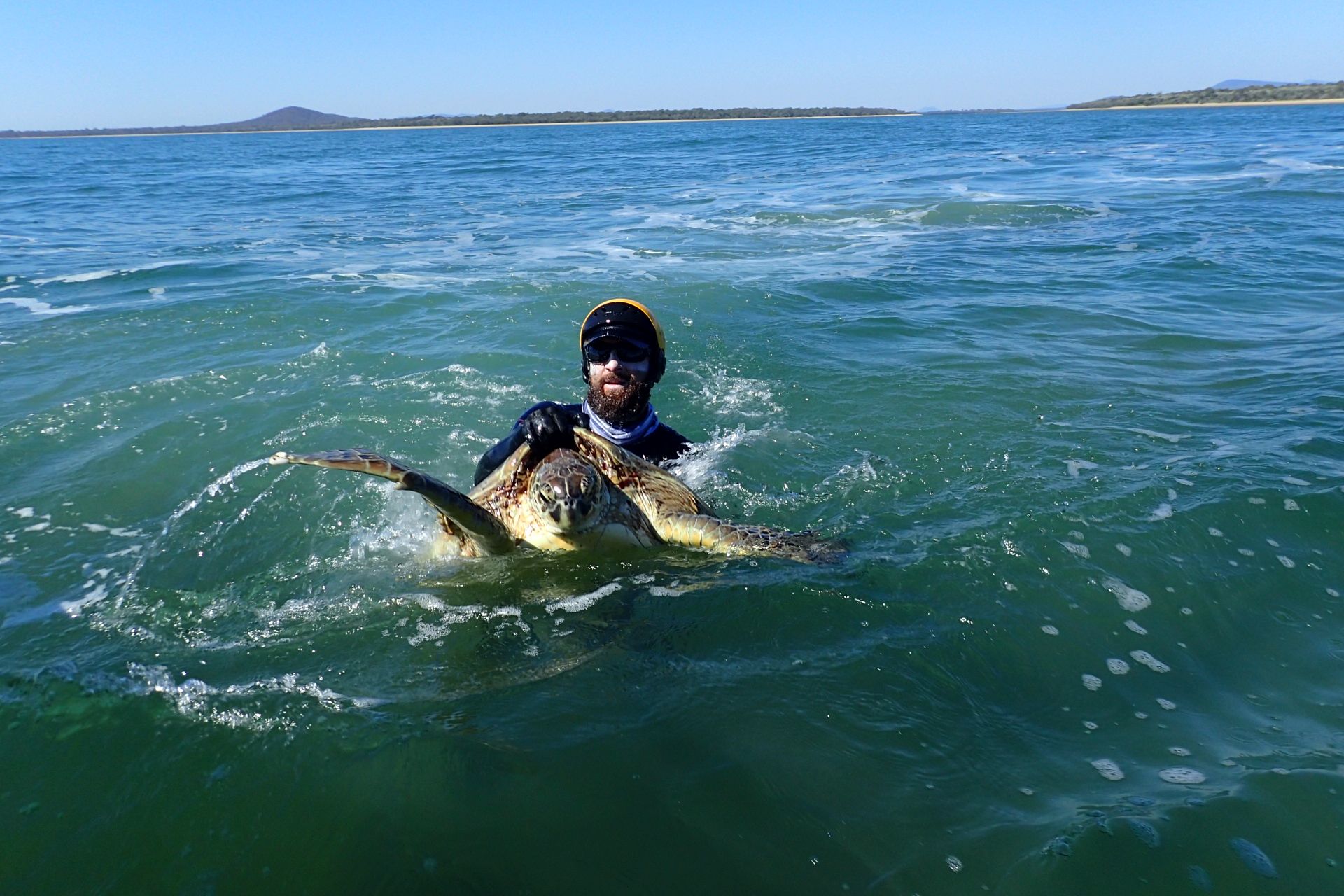The significance of the GBR for dugongs and turtles was one of the reasons for its World Heritage listing. Research reveals green sea turtles and dugongs play a crucial role in protecting the health of the Great Barrier Reef, by helping vital seagrass meadows flourish. To enhance the protection of our iconic marine turtles and dugong in Far North Queensland and the Torres Strait, the Australian Government has committed $5.3 million over three years for delivery of a Dugong and Turtle Protection Plan under the Reef 2050 Plan and Reef Trust. The plan addresses threatening processes that impact on the long-term recovery and survival of these protected migratory species.
 Photo Credit: JCU PhD student
Daniel Gonzales Paredes
Photo Credit: JCU PhD student
Daniel Gonzales Paredes
Researchers are using eReefs models as part of their dugong surveys along the GBR. The chance of spotting dugongs from the aerial surveys depends on the depth of the water, which varies with tides. To get accurate tide levels, JCU researchers are using the eReefs hydrodynamic model to find the height of the water at each dugong observation. This height is combined with the known bathymetry to calculate the water depth, which is then used to compensate for the depth bias, allowing for more accurate modelling of the distribution of the dugongs and their population estimates along the Queensland coastline.
As part of her PhD Emily Wester (JCU) is studying the fine-scale habitat use of green turtles in the Gladstone region to better understand the reasons behind the movement of the tracked animals, she needed understand the environmental conditions that might be driving their behaviour. eReefs provided a detailed and consistent source of information about ocean hydrodynamics, such as temperature, salinity, and currents, along biochemical variables like daily turbidity and seagrass production. For her analysis, she needed these environmental conditions for over 150,000 data points (lat/long/time). The eReefs team collaborated with Emily to develop a programmatic solution to extract all the data she needed for her analysis.
Outcomes and Impact
- Better target where and when to survey
- Understand the environmental conditions that turtle and dugong prefer and thrive in